ayr villa
ayr villa
Hendford
Ayr Villa, or Ayr House, (No 17 Hendford) was built in the late 1880's as the Manse for the Baptist Minister.
The following description is taken from the Baptist Church Minute Book "Site 61ft frontage 100ft in depth. House to occupy a frontage of about 37ft and a depth of about 31ft outside measurements. - Dining & Drawing rooms, Study, Kitchen, etc. on ground floor - Cellar, larder, etc. under half the building. Four bedrooms with WC and Bathroom on first floor with attic bedroom over. - Stone bay windows to Dining room, Wood ditto to study facing south. Down-stairs rooms 10ft and up-stairs 9ft in height. Cost not to exceed £600."
The final accepted tender price was £699 5s 0d by John Andrews of Thornford. The Minute Book also notes "Mrs Newnam to be asked to lay Foundation Stone. Mrs Newnam to be presented with a Trowel."
In 1889 the Minute Book records "Mr Newnam (the minister) expressed sorrow at not being able to occupy the Manse for some considerable time, Mrs Newman having such a nervous horror of living in a new house. He suggested letting the house for 3 or 5 years offering to pay whole of rent to go towards the debt."
Around 1900 it was occupied by the Reverend Ernest Whitby Burt, son of William Burt of Yeovil. The Reverend was also a missionary under the English Baptist Mission in Shantung, China from 1888. His father William, a coal and timber merchant as well as a Yeovil JP, died in Ayr Villa on 9 May 1925.
More recently it was the premises of an estate agent until 1992, was briefly owned by the Council and lastly was a solicitor's office.
map
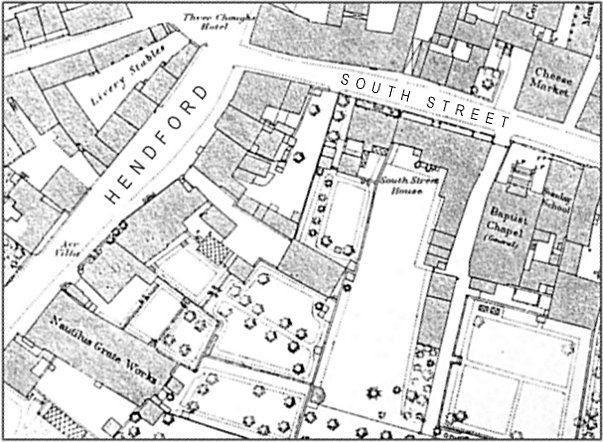
This map, based
on the 1886
Ordnance Survey,
shows Ayr Villa
at left and to
the immediate
north of the
Nautilus Grate
Works.
gallery
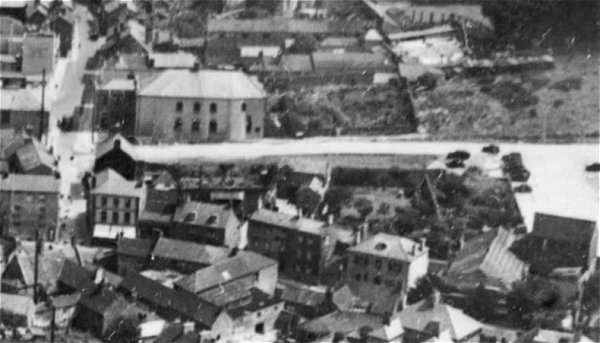
This aerial photograph dates to 1935 and shows Petters Way running across the photograph from South Street, at left, to the car park at right. Buildings of note are - the Greyhound Inn at very top left, the Baptist church at top left, the Three Choughs Hotel at centre left edge with the junction of South Street with Hendford to its right. On the opposite corner the buildings running along the east side of Hendford (with their street elevations facing us) are Chudleigh's seed merchants, the small shop that had been John Chaffin's photographic studio (later the WI Market), next to the Butcher's Arms. Next is Flower's House then Ayr Villa and finally the furniture emporium known as The Rink owned by Henry White. Note that in the top right hand corner is the field that the Yeovil Law Courts and Police Station would be built on three years later, in 1938.
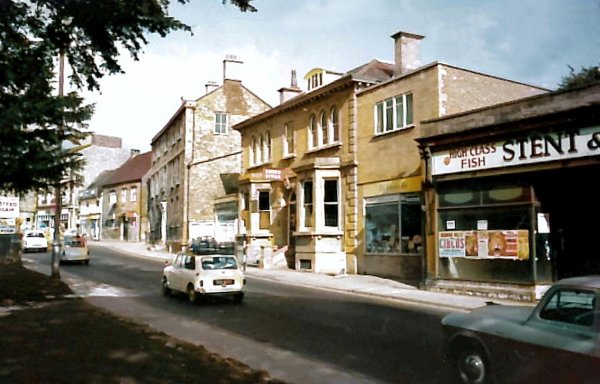
This colourised photograph
of Hendford,
taken in the
early 1970s looks
towards the
Butcher's Arms.
The fish shop
has gone, its
site now
occupied by
Dolphin House,
but all of the
other buildings,
including
Ayr Villa at
centre and
Flower's House
next to it,
remain today up
to, and
including, the Butcher's Arms
seen between the
two cars.
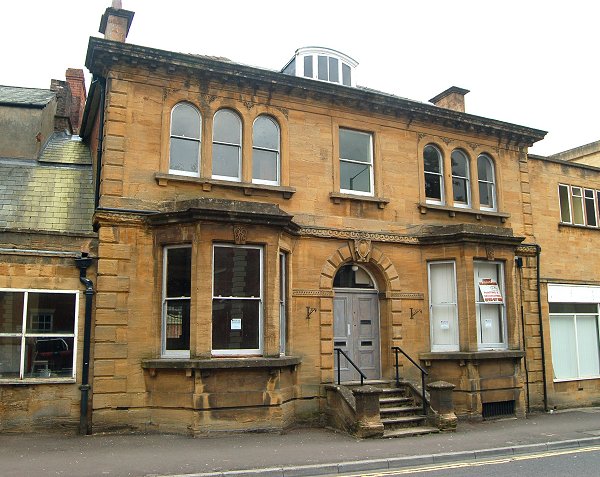
Ayr Villa,
photographed in
2013.
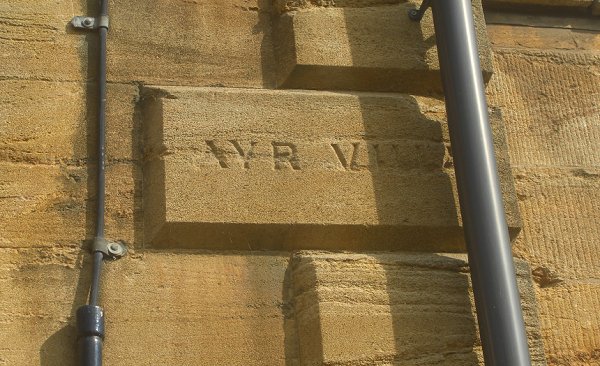
Easily overlooked (I did), Ayr Villa's name stone is on the right as you look at the front elevation, partially obscured by the rainwater downpipe.